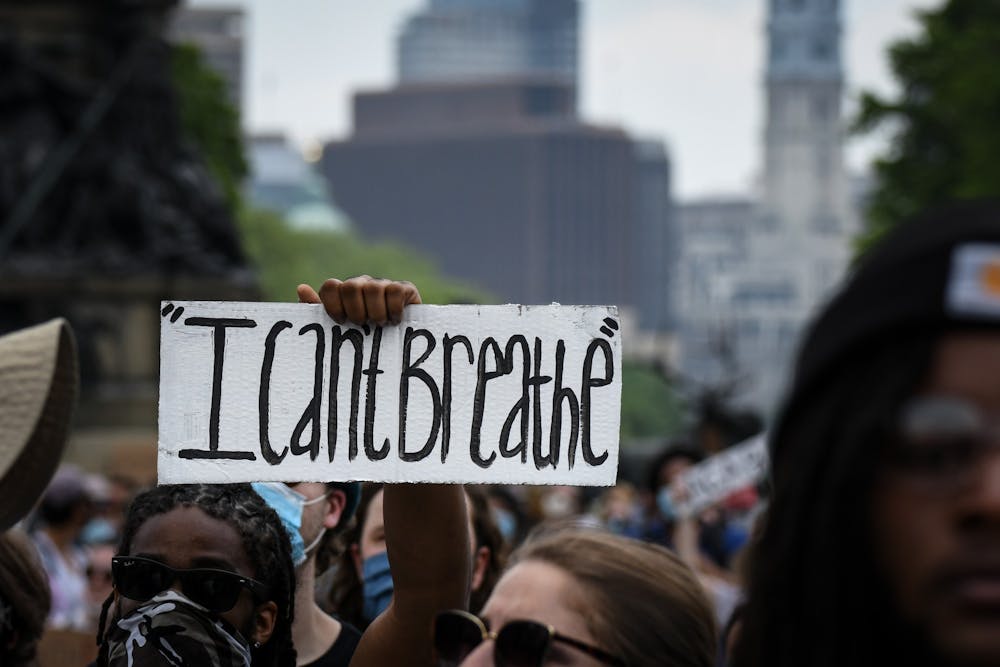As the police killings of George Floyd and many other Black Americans remain at the forefront of Americans’ minds — with twelve consecutive days of protests in cities across the nation — the national conversation is expanding to include larger discussions about systematic racism and the current movement against police brutality.
Daniel Gillion, Political Science professor and author of the book “The Political Power of Protest: Minority Activism and Shifts in Public Policy,” said the response to Floyd’s killing is different than the response to other recent police killings of unarmed Black men. Gillion described America’s current state as the “crescendo” of multiple forms of activism taking place.
“When you look at this particular protest event within the context of other protests dealing with race, you see that this nation has reached the breaking point,” Gillion said.
University Chaplain Reverend Charles Howard said the country is already very fragile — feeling hopeless, heartbroken, and distant from one another.
“We, as a society, are already on edge because of the global pandemic around COVID-19,” Howard said. “We were already at a 10 emotionally and this kind of has blown so many of us off the charts.”
Even during the pandemic, thousands of protesters have taken to the streets in Philadelphia and other cities around the world after Floyd's death.
Gillion said the factors that determine the success of a protest are its size, the length of time it occurs for, and whether or not it has a global organization backing it.
“Some of these factors also include violence. It includes police arrest, it includes police presence, it includes the destruction of property,” he said. “The protest is not always the nice, neat, organized non-violent image that we want to paint.”
Live updates — Philadelphia protests over George Floyd's murder for seventh straight day
Thousands of activists march through Philadelphia protesting police murder of George Floyd
Gillion added that while non-violent protests bring awareness, violent protests bring urgency and force individuals to take action. This combination, he said, is what will lead to change in the mindsets and actions of both citizens and those in power.
Gillion said that even when the protests die down, it will be difficult to return back to “normalcy,” as Americans will begin to see race in a new light, leading to change in society and politics.
“The outrage and demand for change and justice, I think is at a greater height,” Howard said.
He added that those currently protesting the police killing of George Floyd comprise a group that is much more diverse than those at Black Lives Matter protests following the deaths of Trayvon Martin, Michael Brown, and Freddie Gray.
Although there is increased participation from non-Black Americans in the current protests, Floyd’s death has also sparked a conversation about anti-Black sentiments within the Asian American community.
Asian American Studies Program Director Josephine Park said she has witnessed this conversation take place alongside shared horror and solidarity between Black and Asian Americans. Park said both groups are united by the need to face and understand their “shared crisis” of white supremacy.
Park added that the only thing binding Asian Americans together is racism — as there is no common language or physical characteristics — which she said means their fight is inseparable from a larger struggle against white supremacy.
“It’s important that we not only hope but that we remember that things will change,” Howard said. “It may not feel like it. Things are progressing and things will change.”
While Floyd’s death has ignited a powerful period of resistance, this is not the first time police officers have killed an unarmed Black man. In 2019, 1,098 people were killed by the police and although Black Americans comprise 14% of the population, 24% of people killed by the police last year were Black.
The rate at which Black Americans are killed by police is also more than three times as high as the rate of white Americans.
Floyd, a Black man, was killed by a white police officer who kneeled on his neck for eight minutes and 46 seconds as Floyd laid pinned against the ground in handcuffs. The police officer, whose knee was on Floyd's neck for two minutes and 43 seconds even after he became unconscious, has been charged with second-degree murder.
As Floyd repeatedly said he was unable to breathe, three other former officers stood by and watched the crime occur. They are now charged with aiding and abetting second-degree murder, and aiding and abetting second-degree manslaughter.









